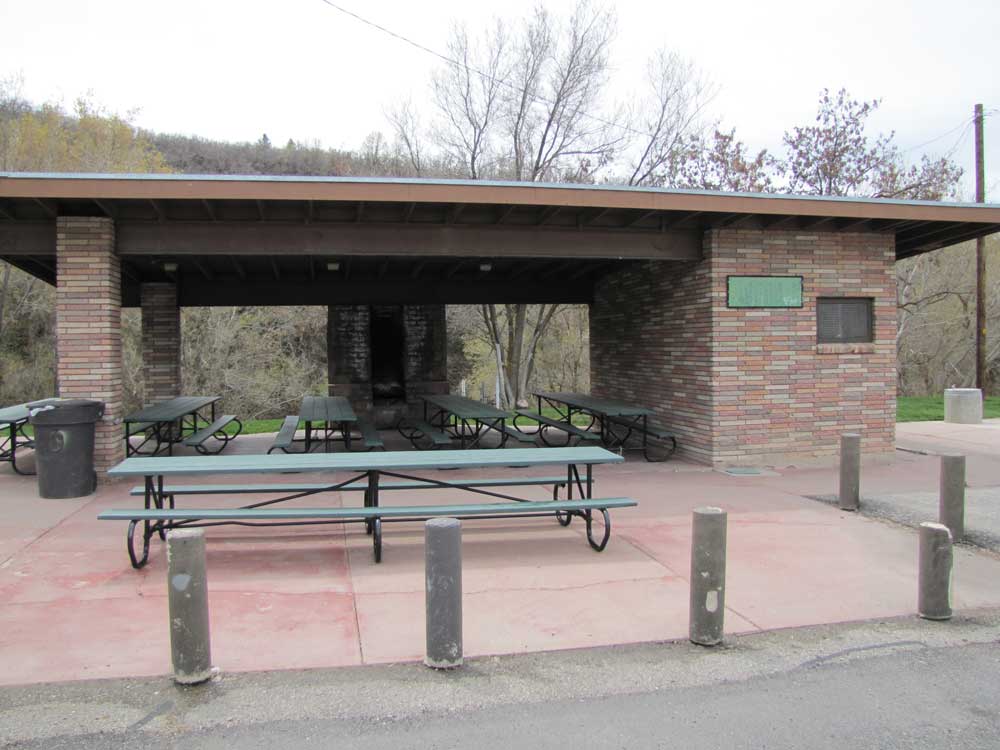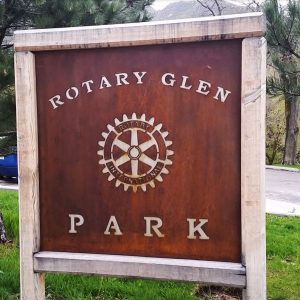Amenities
- Restroom
- Drinking Fountain
- Pavilion
- Picnic Tables

History of Rotary Glen Park
Rotary Glen Park, built in 1953, marks the mouth of Emigration Canyon, a historically significant location in the Salt Lake Valley. Native people, explorers, trappers, Mormon pioneers, and the Donner-Reed party are commemorated here with a monument near the park’s entrance.
The Ute, or People of the Mountains, used this land thousands of years before settlers arrived. They considered the canyon as a place of Great Power. The Salt Lake Valley was called the Land of Peace between Nations, as the Ute, Goshute, Navajo, Paiute, and Shoshoni all prepared for winter by gathering food here without contention.
The 1820-the 30s brought explorers, trappers, and traders into the valley and Wasatch canyons for a short time. Explorer John C. Fremont detailed Emigration Canyon in his book on the Great Basin, calling Emigration the “gate to the Salt Lake Valley.” It is one of two Wasatch canyons that have an entrance and exit. Emigration Canyon soon became known as a shortcut to California, to be taken by many travelers.
The Donner-Reed pioneer party took the suggested shortcut through Emigration Canyon in 1846. The brush along the creek bottom prevented them from exiting the canyon’s mouth and instead opted to climb up and over the steep hill to the south, ultimately exhausting their livestock. Emigration Canyon ended up not being a shortcut in the least, winter trapping them in the mountains of California, eventually leading to starvation, sickness, and cannibalism.
A year later, Mormon Pioneers followed in the Donner-Reed party’s footsteps, advantaged by the cleared path. However, they did not take the same pathway out of the canyon and instead gained great success in settling the Salt Lake Valley over the next 22 years with the arrival of over 60,000 LDS Pioneers.
